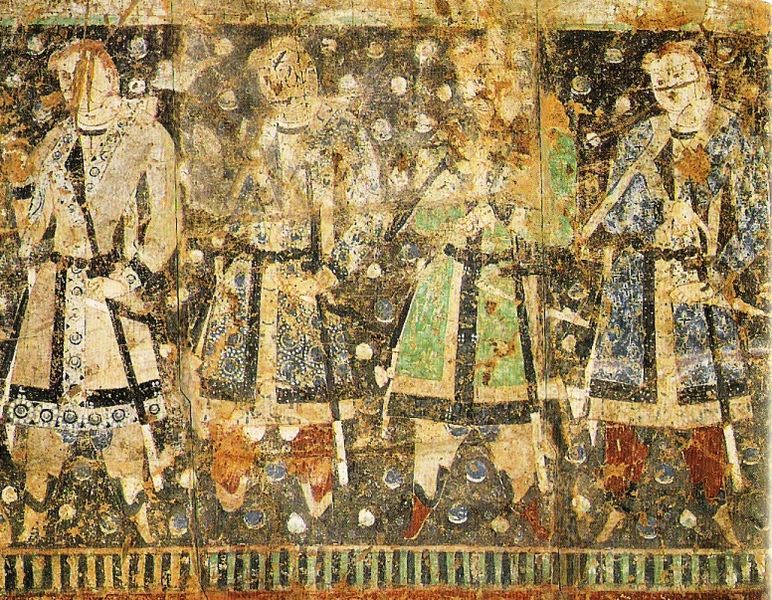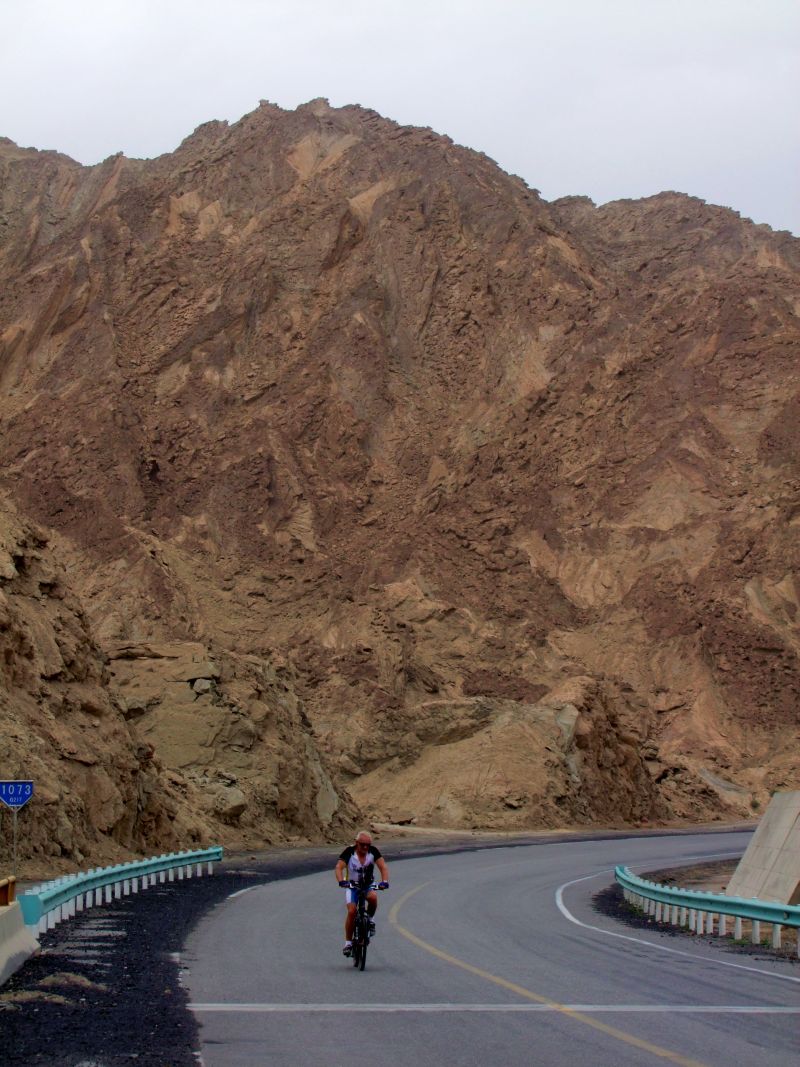After a first boring half stage, we made a small detour to visit the Kizil site of 1000 Buddhas. One thousand is a bit optimistic, the real number is 236, and only 6 of these caves are open for visitors. The first thing our local guide asked us, was whether we were from Germany. Germans are not very popular hers, since in the early 20th century several German expeditions dismantled nearly 500 square meters of the famous frescoes and brought them to Germany. Most of them were destroyed during WW2 bombings.
What our guide did not tell us, was that in the 10th century, with the rise of Islam all Buddha statues were destroyed by local people, and whatever remained was badly damaged during the infamous Chinese Cultural Revolution.
These caves are the oldest in China, some having been carved in the rock around the 3rd century. The frescoes are all painted in just 5 colors, and are strongly influenced by Indian Buddhism, totally different from Tibetan Buddhism.
The second half of our 143km stage led us through a very wild and deserted landscape. The road became hilly and we passed magnificent places. We are still in Xinjiang province, where the Uyghur live, mostly on the countryside.
Kuqa, on the other hand, looks much more like a Chinese town, and the Han Chinese are in majority here.
We decided to take a rest day here. Personally I am quite tired after these first stages, having done no exercise for 2 month. Also, I am suffering from a wrist injury which I got when Nico and I fell off our camels 1 week ago. As for Nico, he is not in the best shape either, but his problem is rather the Chinese food…

